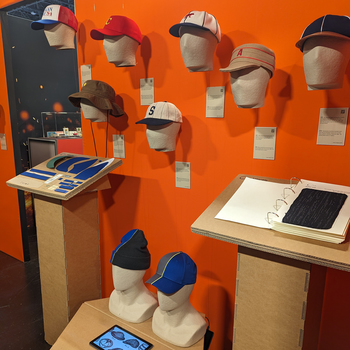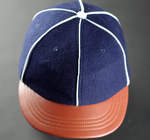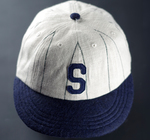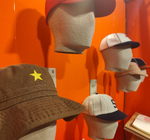
A Symbol of American Culture
 The baseball cap, an unmistakable symbol of American culture, has a fascinating history that dates back to the late 19th century. From its humble origins as sun protection on the baseball field, it has evolved into an iconic fashion accessory and a statement of personal style. This evolution reflects changes in attitudes toward headwear and its universal significance.
The baseball cap, an unmistakable symbol of American culture, has a fascinating history that dates back to the late 19th century. From its humble origins as sun protection on the baseball field, it has evolved into an iconic fashion accessory and a statement of personal style. This evolution reflects changes in attitudes toward headwear and its universal significance.The baseball cap, a distinctive symbol of American culture, could aptly be referred to as America's national hat. It consists of a flexible cap and a stiff brim, often adjustable at the back. Its origin takes us back to hat styles of the late 19th century, including deerstalker caps, made famous by Sherlock Holmes' illustrations, jockey caps, military "pillbox" caps, fedoras, and boater hats.
The fascinating history of the baseball cap begins in the 19th century with "hemispherical hats" – precursors to today's baseball caps, albeit without a brim. Until that time, straw hats were the norm for baseball players. In the following years, a crucial improvement was made to protect players from the glaring sun. The front of the cap was reinforced, and a brim was added, shaping the distinctive style of the baseball cap. In 1860, the Brooklyn Excelsiors became the first to wear baseball caps as part of their uniform. The team later became the successful Brooklyn Dodgers, winning six championships.
As the 20th century dawned, headwear left the playing field and found its place in everyday attire. The first logo appeared in 1901 on a Detroit Tigers cap – an image of a running orange tiger on the front. In the 1940s, the front of the cap became more vertical, turning it into a veritable billboard and giving it the cap style we know today. At the beginning of the new millennium, the Major Baseball League switched from wool caps to polyester caps for added player comfort.
With the spread of baseball broadcasts on television, the sport became more popular, and fans began expressing their support for their teams by wearing caps. In the 1960s, companies recognized the advertising potential of baseball caps, and shortly after, promotional caps – now known as trucker caps – became increasingly popular. At the same time, both men and women appreciated baseball caps as sun protection, and they were portrayed as gender-neutral in fashion spreads in Vogue during this time. Finally, television and film stars like Tom Selleck in Magnum and Tom Cruise in Top Gun solidified the cap's transition from a pure sport accessory to a fashion statement.
With its mainstream acceptance, men and women began experimenting with the style by wearing the cap backward or to the side to express their personality. The headwear was adopted by musicians, from rappers to punk rockers and grunge singers, later on to pop stars and the MTV generation. Celebrities started using the cap as a shield against paparazzi. As its popularity transcended national borders, British middle-class youths introduced the baseball cap as part of their standard uniform in the early 2000s. Luxury brands produce high-quality versions of the cap, propelling it into the realm of luxury fashion. Despite expensive variations, the affordable, durable basic version remains a staple in the modern style repertoire.








